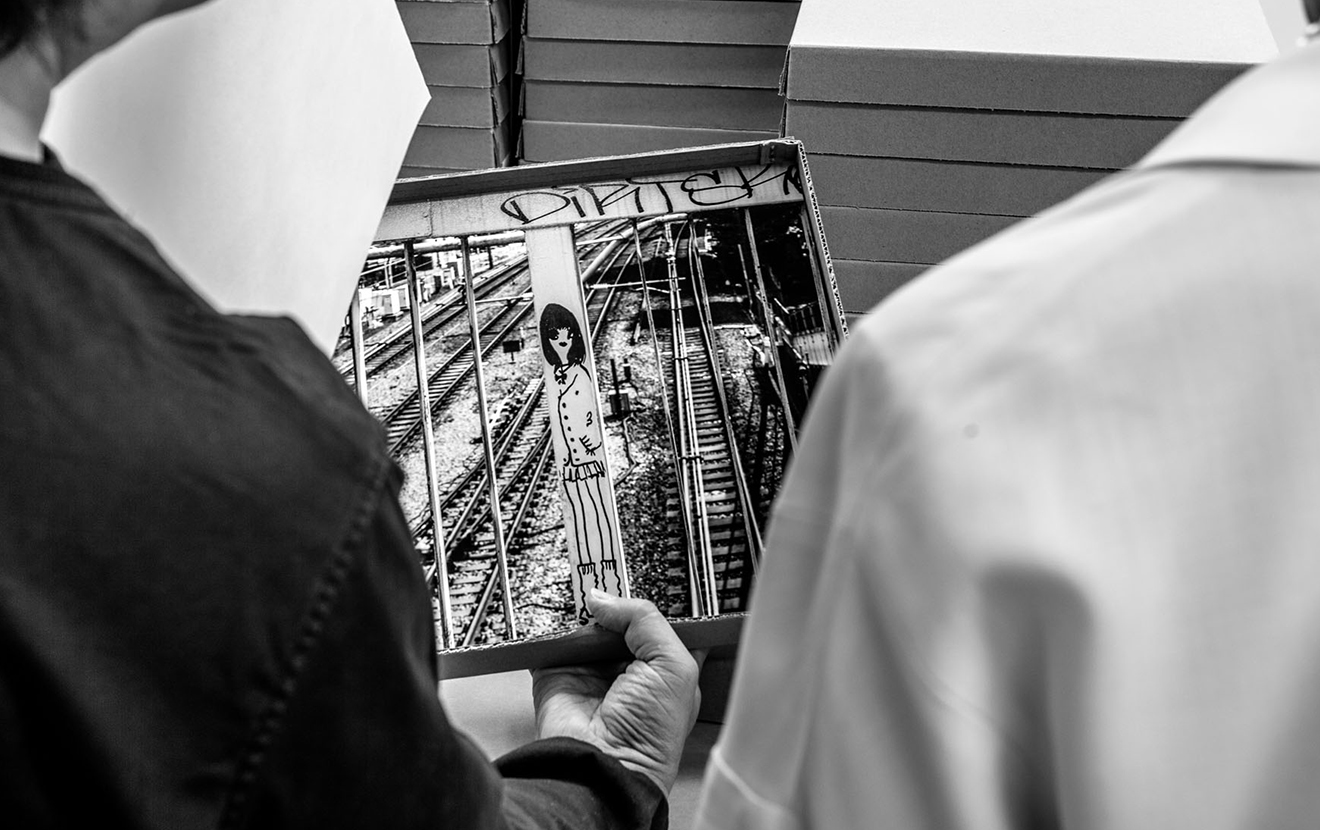
Contrasts.
After Paris, the next stop for the photo exhibition “Tokyo Curiosity” by the Tokyo-GA group is Berlin. With their images, the members of the group aim to set a counterweight against those from the Fukushima disaster in 2011. The Tokyo-GA photographer Günter Zorn reports for “planet”, showing how Lufthansa Cargo provides assistance during the exhibition’s European tour.
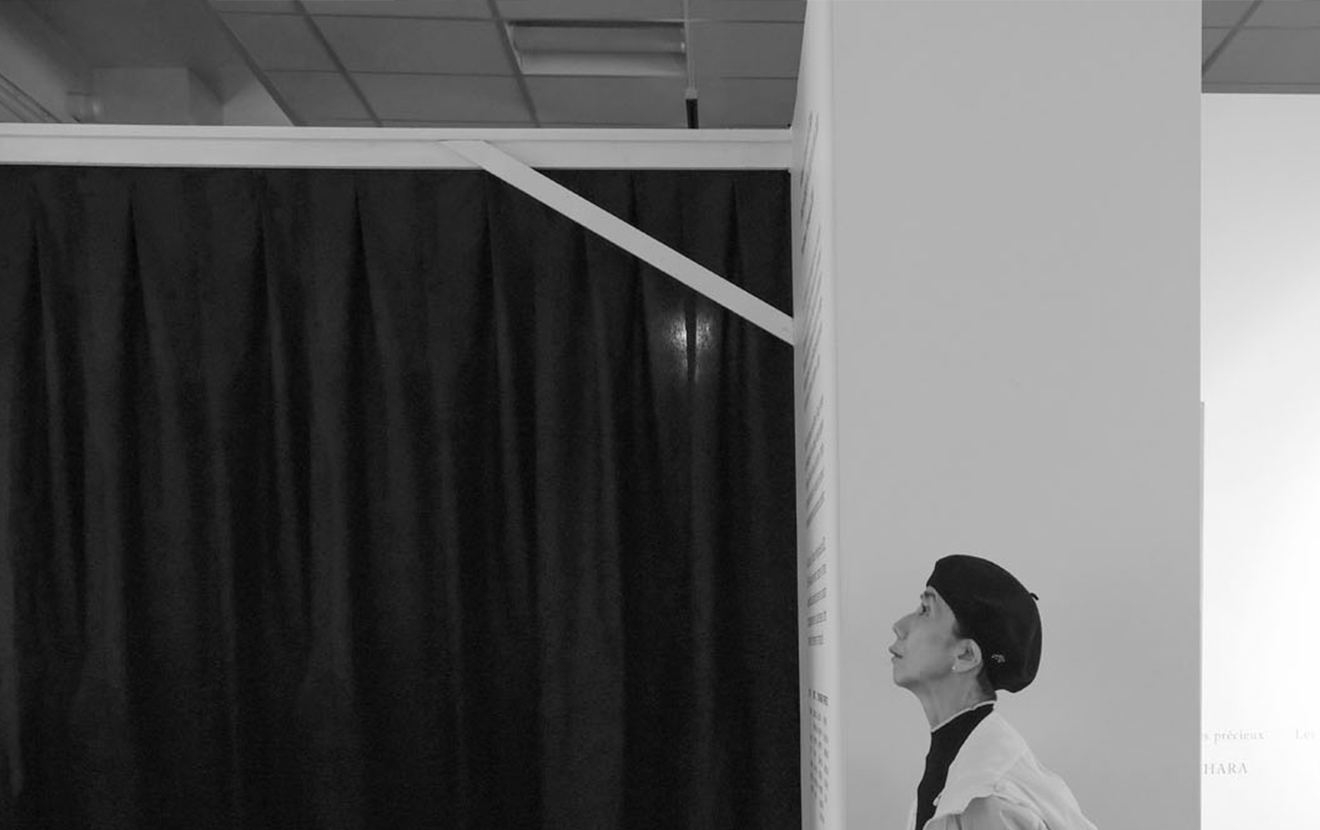
Spring 2011: a sad flood of images from Japan reaches the outside world. They are records of a triple disaster: on March 11, an earthquake rocked the country, and not long after, a tsunami absolutely flattened towns and villages. The damage sustained causes the cooling systems at the Fukushima nuclear power station to fail, which leads to a core meltdown.
In the summer of 2011, more images from Japan go out into the world. They are pictures taken of small street-side restaurants where women dressed in kimonos laugh and joke with the bartender. Photos of colorful neon signs in busy town squares, and of children walking hand in hand under a yellow umbrella. These are snapshots of everyday life in Japan – life as it continues even after the disaster. The images were taken by photographers belonging to the group of artists called Tokyo-GA (東京画 – or Tokyo Images). The international curator Naoko Ohta initiated the project soon after the disaster occurred – as a means of offsetting the sorrowful images that went around the world in 2011. Tokyo-GA still continues collecting new daily images to date.
Selected works by the collective are currently on an exhibition tour. “Tokyo Curiosity” also includes photographs taken by Günter Zorn. The former country manager for DHL today works in Tokyo as a professional photographer. He is the only German living in Japan to be granted membership of Tokyo-GA. Last fall, he accompanied the transport of the exhibits by Lufthansa Cargo. This is the story, in his own words.
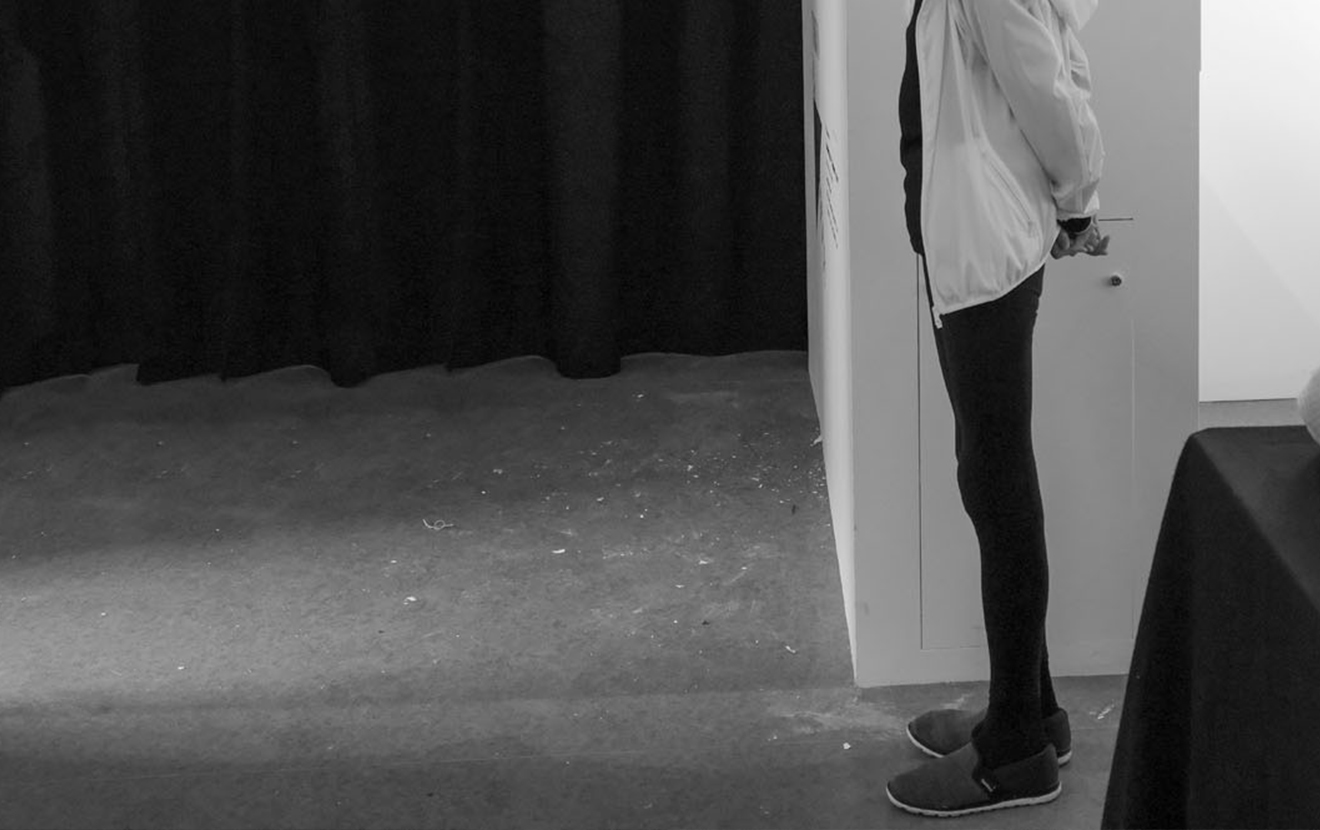
FROM THE POINT OF VIEW OF A PHOTOGRAPHER – AND THE PERSPECTIVE OF HIS CAMERA.
It is October 2018, and I am standing in the cargo section of Tokyo Narita Airport. Dangling from my neck are my Leica, and various special ID tags that give me direct access to the tarmac. In front of me, a stack of cardboard boxes on a pallet, twice the height of a man. It is thickly wrapped in foil, and then secured with a cargo net. On the outside, in big letters: “Tokyo Curiosity.” I take a few pictures. And I stop for a moment. Until now, I have never given much thought to international air freight. It is, and always was, a matter of routine for me. Happens every day, and everywhere. And generally it works without a hitch. But this time, everything is a little different.
I know that inside these boxes are 200 works of art from our group Tokyo-GA that are about to be flown to Paris. What makes it even more precious to me: some of the works are my own.
Lufthansa Cargo is sponsoring our exhibition. When I was asked to accompany the artworks on their trip and take photographs, I was immediately hooked on the idea. Unfortunately I was also very busy at that time. My Tokyo-GA colleague Hiroki Ikesue was kind enough to take care of the Paris leg for me. But I was not going to miss out on the loading of the artworks at the airport in Tokyo.
|
My photos were to be published in the magazine “planet”, I already knew that. The editor in charge had asked me to provide photographs in black-and-white. His intention was for the feature to have a unique look, one that makes it visually distinct from the other articles in the magazine. His wish was my command. Black-and-white is my favorite color. It brings out what is essential. And so, on the big day, I am standing – with my Leica Monochrome 246, the queen among digital cameras for black-and-white photography – at Tokyo Narita Airport. I am in the company of Naoko Ohta. We had already spent several hours at a framing company in Tokyo, where our artworks were placed in airworthy packaging. |
Now – in the cargo section at the airport – we get talking to several of the cargo workers. They appear friendly and cooperative. What puts our minds at rest is that we get the impression that these people really love their work, and that they take great care in handling the freight – especially when that cargo consists of works of art. Naoko told me later: “I absolutely adore working with the team from Lufthansa Cargo. They have a feel for omotenashi, and I really appreciate that.” Omotenashi – the word stands for a complex and many-layered concept of hospitality and customer service in Japan. |
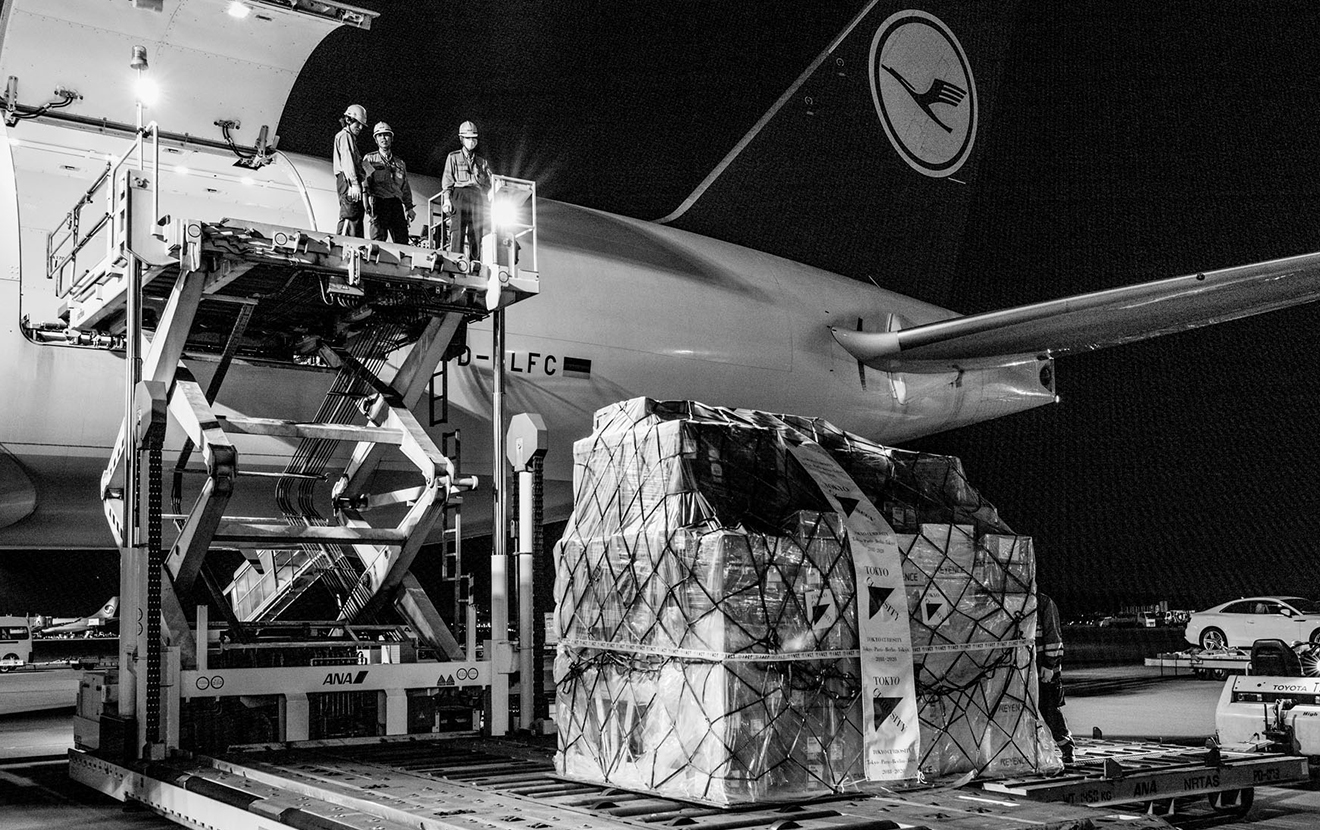
But back out on the tarmac, where daylight has already faded. The Boeing 777F looms like a gigantic monster. Its cargo door like a greedy mouth, ready to swallow containers and pallets with all sorts of goods for the world. Including our photographs. I have always enjoyed watching airplanes in the sky. But to see these giants up close, to walk under their belly and along their endless wings, that is something else entirely. I feel overwhelmed.
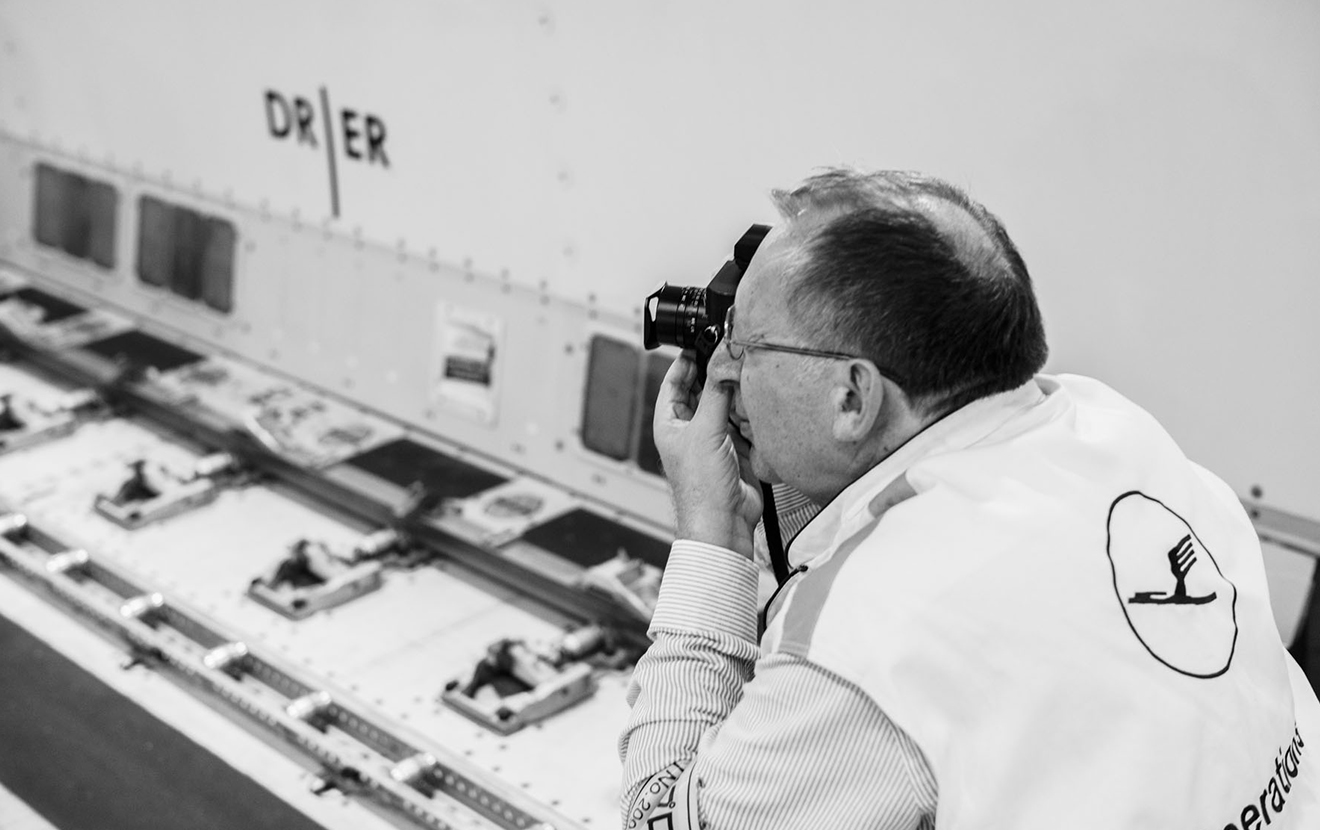
And I am even allowed to enter the still empty cargo hold. The space opens up in front of me like a huge high-tech cathedral. I am totally focused on taking pictures. Everything seems surreal. Suddenly a huge machine – much like that one of the monsters in a Transformer movie – raises our pallet and pushes it into the cavernous cargo hold. Now everything must get done very quickly. We wave our good-byes and take a group photo of the cargo team. And then it’s all over. The plane takes off right on time and is on its way to France. And Naoko and I drive back to the inner city of Tokyo. In the car, we talk about our impressions of the day. And we feel relaxed as we look ahead to the coming weeks. Lufthansa Cargo will also take care of the remaining legs of the journey of our artworks. We feel certain that they will be in good hands the entire time.
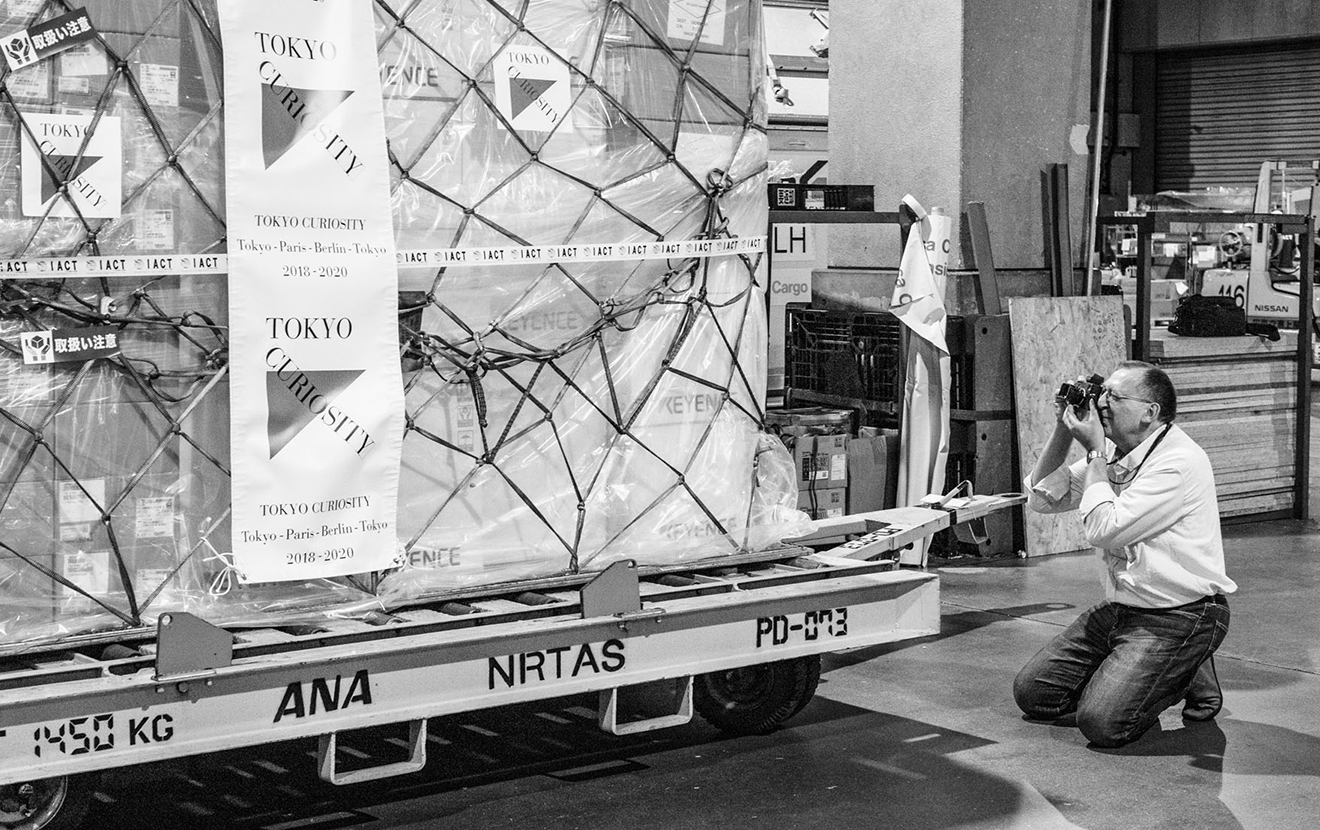
Günter Zorn – A GERMAN PHOTOGRAPHER IN TOKYO.
Günter Zorn, born in Bonn in 1953, used to work for the Japanese branch of Heidelberger Druckmaschinen and as country manager for DHL. When he moved to Tokyo to take up his job as manager in 1991, his first impression was predominantly one of giant concrete stilts, skyscrapers and an endless sea of houses. Yet this image soon changed. Zorn discovered Tokyo in his very own way: for him the city reveals itself as a metropolis of a thousand villages. The trained media and photography engineer settles in one of these villages: Kagurazaka. Zorn describes the quarter with its mix of Japanese culture, quiet alleys, a patina and its almost European flair as a place that reminds him a little of his homeland. To this day he still lives with his wife in Tokyo and documents life on the streets with his camera. He regularly exhibits his pictures in Japan, France and Germany. He is a member of the board of the Tokyo-GA group.
